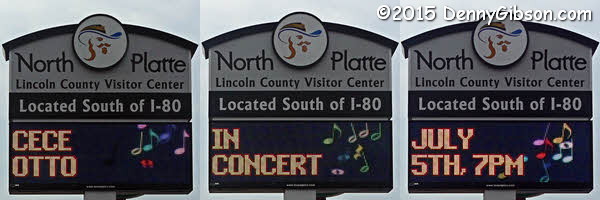 I’ve yet to read To Kill a Mockingbird. I have seen the 1962 movie multiple times and now I’ve seen the play. I had hoped to read the book between learning that the play would be performed this season at Cincinnati Playhouse in the Park and actually seeing it but that didn’t work out.
I’ve yet to read To Kill a Mockingbird. I have seen the 1962 movie multiple times and now I’ve seen the play. I had hoped to read the book between learning that the play would be performed this season at Cincinnati Playhouse in the Park and actually seeing it but that didn’t work out.
The Friday night performance would be the biggest event of my week but I didn’t expect it to lead to a blog post. I anticipated that a canned Trip Peek would be published this morning. A Friday morning email got me to thinking differently.
The email was the April E-News from the Smithsonian. One of the topics was “The Scottsboro Boys” with this two sentence tease: “The case of the Scottsboro Boys, which lasted more than 80 years, helped to spur the civil rights movement. To Kill a Mockingbird, the Pulitzer Prize-winning novel by Harper Lee, is also loosely based on this case.”
I read the article referenced in the email and could easily see similarities between the 1931 real world incident and the fictional one Harper Lee set just a few years later. Both involved black men accused of imaginary crimes against white women and both occurred in a world where color mattered a whole lot more than truth. Later I read that in 2005 Harper Lee said this was not the incident she had in mind when writing To Kill a Mockingbird but that it served “the same purpose”. Despite there not being an official connection between the Scottsboro Boys and To Kill a Mockingbird, reading about the incident and its repercussions served a purpose for me, too. It provided an unpleasant picture of this country near the midpoint between the Civil War and today. The accuracy of that picture is reinforced by a contemporary pamphlet, They Shall Not Die!, referenced in the Smithsonian article.
 I took my seat on Friday with the Scottsboro story fresh in my mind. The stage was bare except for a single light bulb which would actually be removed at the play’s start although it would return later. The stage consists of a large circular center and a surrounding ring both of which rotate. Sometimes they rotate in opposite directions which can seem to expand the distance between actors or the distance they travel. Set Designer Laura Jellinek states that “our main goal was to eliminate any artifice between the audience and the story” and this set certainly accomplishes that. As one audience member observed during the discussion that followed the play, she briefly looked around for the jury during the courtroom scene before realizing that “we were the jury”. At its most crowded, the stage holds nine chairs for the key figures in that courtroom scene.
I took my seat on Friday with the Scottsboro story fresh in my mind. The stage was bare except for a single light bulb which would actually be removed at the play’s start although it would return later. The stage consists of a large circular center and a surrounding ring both of which rotate. Sometimes they rotate in opposite directions which can seem to expand the distance between actors or the distance they travel. Set Designer Laura Jellinek states that “our main goal was to eliminate any artifice between the audience and the story” and this set certainly accomplishes that. As one audience member observed during the discussion that followed the play, she briefly looked around for the jury during the courtroom scene before realizing that “we were the jury”. At its most crowded, the stage holds nine chairs for the key figures in that courtroom scene.
The discussion I mentioned happens after every performance. Anyone interested moves close to the stage to listen or participate. There were naturally questions about this specific production but there were also questions about the story. There is a sign in the lobby that I now wish I’d taken a picture of. “Don’t read books that think for you. Read books that make you think.” might not be 100% accurate but it’s close. Friday night’s discussion was evidence that this play is prompting some thinking and I’ve no reason to think that discussions following other performances are any different.
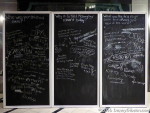 There is also a set of blackboards in the lobby. As I assume is true at every performance, the blackboards started out empty except for a question at the top of each. By the time people started heading home, the boards were full. It’s pretty clear that some thinking is going on here, too.
There is also a set of blackboards in the lobby. As I assume is true at every performance, the blackboards started out empty except for a question at the top of each. By the time people started heading home, the boards were full. It’s pretty clear that some thinking is going on here, too.
It was the coincidence of the Smithsonian email showing up on the day I was set to see the play that nudged me towards making it a blog entry. There is another coincidence of sorts that I find interesting. Each week, the blog This Cruel War publishes an article on lynchings. The article is published on Wednesdays but, since I subscribe via RSS and I seem to always be behind in my RSS reading, it is often a day or more after publication before I read a specific article. I read this week’s post the morning after my Playhouse visit. In it, the source of the series’ title, “This Disgraceful Evil”, is given. It comes from a 1918 Woodrow Wilson speech in which he calls upon America “…to make an end of this disgraceful evil.”
We don’t have to deal with actual lynchings now as much as in 1918 but there’s still plenty of crap going on. “It cannot live”, Wilson continues, “where the community does not countenance it.”
Originally scheduled to end today, April 3, To Kill a Mockingbird‘s run a Playhouse in the Park has been extended through April 9.

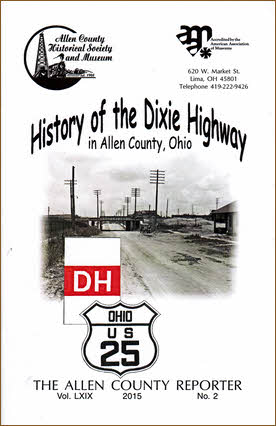 I could have called this a pamphlet review. That’s technically what it is. Or, since one definition of pamphlet is “a small book”, I could have called this a small book review. I decided to leave the title be but, in line with the publication’s size, I’ll try to be brief and do a small small book review.
I could have called this a pamphlet review. That’s technically what it is. Or, since one definition of pamphlet is “a small book”, I could have called this a small book review. I decided to leave the title be but, in line with the publication’s size, I’ll try to be brief and do a small small book review.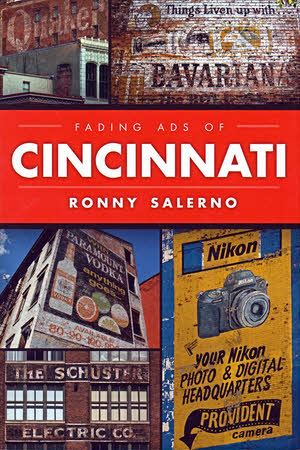 Buying local is a good thing and so is reading local. I was able to combine the two recently. November 30 was the official release date for a new book about Cincinnati and in the early evening its author made the book and his signature available at a downtown location that appears between its covers. The book was Fading Ads of Cincinnati, the author Ronny Salerno, and the location Igby’s Bar inside a building with a fading “TWINE PAPER” painted on its side. Those two dim words are typical of the fading ads that are the book’s subject. How could I not?
Buying local is a good thing and so is reading local. I was able to combine the two recently. November 30 was the official release date for a new book about Cincinnati and in the early evening its author made the book and his signature available at a downtown location that appears between its covers. The book was Fading Ads of Cincinnati, the author Ronny Salerno, and the location Igby’s Bar inside a building with a fading “TWINE PAPER” painted on its side. Those two dim words are typical of the fading ads that are the book’s subject. How could I not?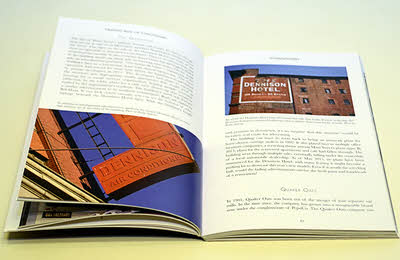 The photos aren’t left to stand alone. Captions describe each of them, of course, and many get multiple paragraphs of attention. Salerno has been successful in digging up many of the signs’ histories with some of the best stories coming from signs identifying local or regional companies that are no longer with us. Names like Shillito’s and Brendamour’s will be recognized by many Cincinnatians and probably some others as well. Out-of-towners might not be familiar with local landmarks like Davis Furniture (“The Friendly Store”) or the Dennison Hotel (“105 Rooms – 60 baths”) but they are exactly what I and some other locals think of when we think of “fading ads” or the more common “ghost signs”.
The photos aren’t left to stand alone. Captions describe each of them, of course, and many get multiple paragraphs of attention. Salerno has been successful in digging up many of the signs’ histories with some of the best stories coming from signs identifying local or regional companies that are no longer with us. Names like Shillito’s and Brendamour’s will be recognized by many Cincinnatians and probably some others as well. Out-of-towners might not be familiar with local landmarks like Davis Furniture (“The Friendly Store”) or the Dennison Hotel (“105 Rooms – 60 baths”) but they are exactly what I and some other locals think of when we think of “fading ads” or the more common “ghost signs”.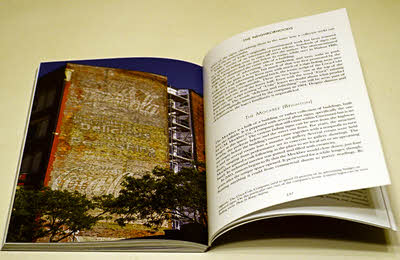 Salerno brings up the phrase “ghost signs” in the introduction and says people often thought he was writing about the supernatural when he used the term. “Fading advertisements”, he says, doesn’t have that problem. Fair enough but it’s just possible that his position also has something to do with the book’s predetermined title. “Ghost sign” slips into the book a time or two and in the final chapter Salerno more or less acknowledges the validity of both. As for me, I’m comfortable and most familiar with the term “ghost signs” (and “ghost bridges” and “ghost towns”) so I’ll just continue to think of Fading Ads of Cincinnati as a book about ghost signs.
Salerno brings up the phrase “ghost signs” in the introduction and says people often thought he was writing about the supernatural when he used the term. “Fading advertisements”, he says, doesn’t have that problem. Fair enough but it’s just possible that his position also has something to do with the book’s predetermined title. “Ghost sign” slips into the book a time or two and in the final chapter Salerno more or less acknowledges the validity of both. As for me, I’m comfortable and most familiar with the term “ghost signs” (and “ghost bridges” and “ghost towns”) so I’ll just continue to think of Fading Ads of Cincinnati as a book about ghost signs.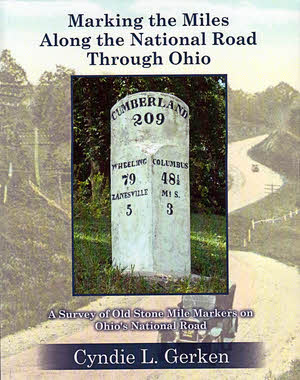 That’s a pretty long book title. There’s a subtitle, too, which makes the whole thing Marking the Miles Along the National Road Through Ohio: A Survey of Old Stone Mile Markers on Ohio’s National Road. It’s long because it, just like the book it identifies, is accurate and precise. The book accurately and precisely locates the 175 mile markers originally set, as accurately and precisely as early nineteenth century technology and local politicians would allow, beside the Ohio portion of the very first federal highway. With all that accuracy and precision you might think this volume would be completely dry and boring but that’s not the case. Stories about the road, the countryside, and even the markers themselves lighten and soften things considerably. Color photos and maps make the book attractive.
That’s a pretty long book title. There’s a subtitle, too, which makes the whole thing Marking the Miles Along the National Road Through Ohio: A Survey of Old Stone Mile Markers on Ohio’s National Road. It’s long because it, just like the book it identifies, is accurate and precise. The book accurately and precisely locates the 175 mile markers originally set, as accurately and precisely as early nineteenth century technology and local politicians would allow, beside the Ohio portion of the very first federal highway. With all that accuracy and precision you might think this volume would be completely dry and boring but that’s not the case. Stories about the road, the countryside, and even the markers themselves lighten and soften things considerably. Color photos and maps make the book attractive.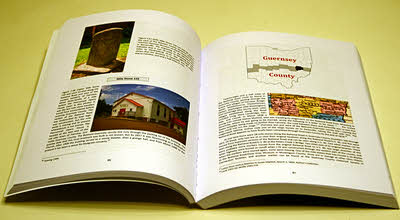 Seven of the ten Ohio counties through which the National Road passed are covered in individual chapters following the introduction. No markers were ever placed in the three westernmost counties on the route as federal funding ended near Springfield in Clark County. Each of these chapters begins with an overview of the county that includes a summary of how many original markers there were, how many remain at their original location, how many exist elsewhere, and how many are lost. Each marker is then addressed individually. With few exceptions there is at least one picture. If a given marker survives, a current photo is included and one or more historical photos are usually presented regardless of whether or not the marker is still around. Understandably, markings on many of the older stones are not exactly legible. Not to worry. Appendix B contains crisp drawings of the inscription of every marker. Markers can often be seen, accidentally perhaps, in old postcards and other photos and many of these appear in the book. Each marker’s history is given and stories about the marker or the area around it frequently add a little fun and background. Placed among the individual marker descriptions are sections of US Geological Survey 7.5 minute topographical maps showing the location of the markers three at a time. Other National Road related landmarks are often shown on the maps as well.
Seven of the ten Ohio counties through which the National Road passed are covered in individual chapters following the introduction. No markers were ever placed in the three westernmost counties on the route as federal funding ended near Springfield in Clark County. Each of these chapters begins with an overview of the county that includes a summary of how many original markers there were, how many remain at their original location, how many exist elsewhere, and how many are lost. Each marker is then addressed individually. With few exceptions there is at least one picture. If a given marker survives, a current photo is included and one or more historical photos are usually presented regardless of whether or not the marker is still around. Understandably, markings on many of the older stones are not exactly legible. Not to worry. Appendix B contains crisp drawings of the inscription of every marker. Markers can often be seen, accidentally perhaps, in old postcards and other photos and many of these appear in the book. Each marker’s history is given and stories about the marker or the area around it frequently add a little fun and background. Placed among the individual marker descriptions are sections of US Geological Survey 7.5 minute topographical maps showing the location of the markers three at a time. Other National Road related landmarks are often shown on the maps as well. Bringing all of this information together is clearly a major accomplishment but Gerken, a past ONRA president herself, says the information is only a portion of what she has collected on the National Road in Ohio. A well deserved breather follows wrapping up Marking the Miles Along the National Road Through Ohio. Nothing is currently scheduled or promised but the future could see a Gerken penned treatise on bridges or taverns or toll houses or something else. I certainly hope so. I like accuracy and precision and I also like anecdotes and insight. Marking the Miles… provides a pretty good mix.
Bringing all of this information together is clearly a major accomplishment but Gerken, a past ONRA president herself, says the information is only a portion of what she has collected on the National Road in Ohio. A well deserved breather follows wrapping up Marking the Miles Along the National Road Through Ohio. Nothing is currently scheduled or promised but the future could see a Gerken penned treatise on bridges or taverns or toll houses or something else. I certainly hope so. I like accuracy and precision and I also like anecdotes and insight. Marking the Miles… provides a pretty good mix.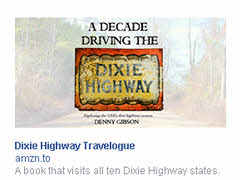 On Friday morning a friend observed on Facebook that he was getting email from every website he had ever visited that had something to sell. His situation was hardly unique. I’m rather confident that everyone with any sort of internet connection was seeing an uptick in activity on the official beginning of open season on customers. The barrage had been building as anxious hunters fired off emails and other communications telling us that their Black Friday started on Thursday or Wednesday or even earlier. This is, I assume, the same sort of time warp that allows certain drinking establishments to advertise “The world’s longest Happy Hour”. I considered emailing him some sympathy but didn’t for two reasons. One was that to do so would be to add to the tide of useless messages in his inbox. The other was that I would soon be part of the problem.
On Friday morning a friend observed on Facebook that he was getting email from every website he had ever visited that had something to sell. His situation was hardly unique. I’m rather confident that everyone with any sort of internet connection was seeing an uptick in activity on the official beginning of open season on customers. The barrage had been building as anxious hunters fired off emails and other communications telling us that their Black Friday started on Thursday or Wednesday or even earlier. This is, I assume, the same sort of time warp that allows certain drinking establishments to advertise “The world’s longest Happy Hour”. I considered emailing him some sympathy but didn’t for two reasons. One was that to do so would be to add to the tide of useless messages in his inbox. The other was that I would soon be part of the problem.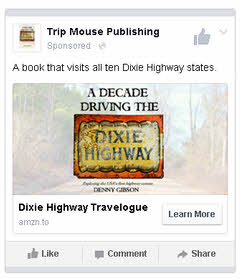 The image at the top of this article shows the ad that appears in what Facebook calls the “Desktop Right Column”. The one at left is for the “Mobile News Feed”. Other variations appear in other channels. As can be seen in the “News Feed” version, the ads are sponsored not by me but by
The image at the top of this article shows the ad that appears in what Facebook calls the “Desktop Right Column”. The one at left is for the “Mobile News Feed”. Other variations appear in other channels. As can be seen in the “News Feed” version, the ads are sponsored not by me but by 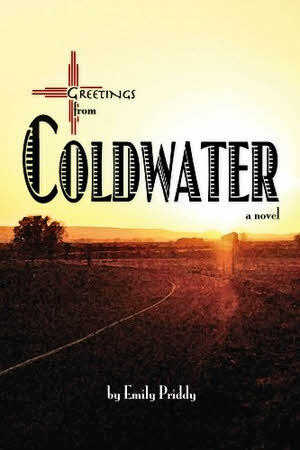 I’m going to admit right up front that defending this post against my About page claim that readers will “not be seeing a review of the latest novel” is pretty much a lost cause. I proclaimed my earlier review of
I’m going to admit right up front that defending this post against my About page claim that readers will “not be seeing a review of the latest novel” is pretty much a lost cause. I proclaimed my earlier review of 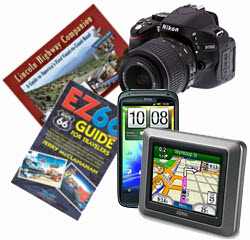 I recently received a request/suggestion for a post on “must have” road trip items. I initially blew it off but returned to it a week or so later. Since I am about to actually head out on a road trip, I need to stockpile some “dateless” (“timeless” almost, but not quite, fits) articles for posting while I travel. You know, the “Trip Peek” or “My Wheels” sort of things that have no connection to what I’m actually doing but can be posted at anytime to meet the blog’s every Sunday schedule. In the middle of generating a couple of “Trip Peeks”, I remembered the email and realized that the suggested “Road Trip Essentials” was as good a topic as any. Of course, it would take more time than a “Trip Peek” but it could be sort of a consolidated “My Gear” and it might be fun. If it also made somebody (the requester) happy, even better.
I recently received a request/suggestion for a post on “must have” road trip items. I initially blew it off but returned to it a week or so later. Since I am about to actually head out on a road trip, I need to stockpile some “dateless” (“timeless” almost, but not quite, fits) articles for posting while I travel. You know, the “Trip Peek” or “My Wheels” sort of things that have no connection to what I’m actually doing but can be posted at anytime to meet the blog’s every Sunday schedule. In the middle of generating a couple of “Trip Peeks”, I remembered the email and realized that the suggested “Road Trip Essentials” was as good a topic as any. Of course, it would take more time than a “Trip Peek” but it could be sort of a consolidated “My Gear” and it might be fun. If it also made somebody (the requester) happy, even better. Of course, all of those accessories have their own accessories. For many years, I only bought gear that used AA batteries on the theory that I could always buy power at the corner drug store if required. I believe that happened once. I carried around a bag of nicads and the chargers to fill them in either car or motel. I eventually had to abandon that position but I still cling to the ability to recharge everything whether stopped or on the go. I now carry spare proprietary batteries and AC/DC chargers for two different cameras and a cell phone. I do not carry a spare for the GPS since I seldom operate it on battery power.
Of course, all of those accessories have their own accessories. For many years, I only bought gear that used AA batteries on the theory that I could always buy power at the corner drug store if required. I believe that happened once. I carried around a bag of nicads and the chargers to fill them in either car or motel. I eventually had to abandon that position but I still cling to the ability to recharge everything whether stopped or on the go. I now carry spare proprietary batteries and AC/DC chargers for two different cameras and a cell phone. I do not carry a spare for the GPS since I seldom operate it on battery power.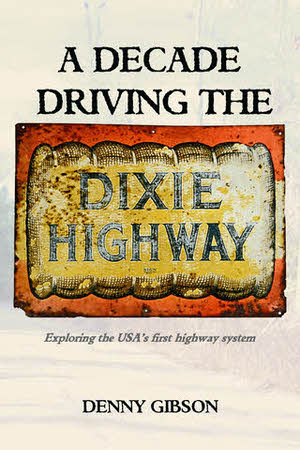 I did it again. I wrote another book. It’s a lot like the other one. It’s an illustrated travelogue and, although there is no old car involved, there is an old man and an old road. That other book,
I did it again. I wrote another book. It’s a lot like the other one. It’s an illustrated travelogue and, although there is no old car involved, there is an old man and an old road. That other book, 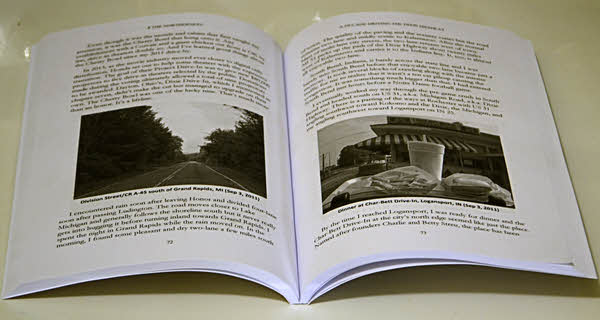
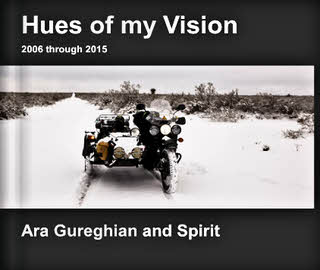 When I previewed this book in April, it was with the hope that a Kickstarter campaign would result in a bargain priced offset printed version. Ara had turned to the crowd funding site to facilitate pre-ordering the book in support of a cost saving bulk order. As noted in a mid-May update to
When I previewed this book in April, it was with the hope that a Kickstarter campaign would result in a bargain priced offset printed version. Ara had turned to the crowd funding site to facilitate pre-ordering the book in support of a cost saving bulk order. As noted in a mid-May update to 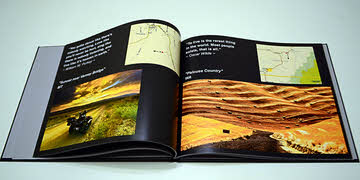 Not surprisingly, many of the photos are of America’s open spaces. Ara has visited and camped in some rather isolated spots and has captured some of their beauty. Canyons, lakes, and improbable shapes carved by wind and water are masterfully recorded and there are many gorgeous sunsets. A quote from Jo Walton really resonated with me:
Not surprisingly, many of the photos are of America’s open spaces. Ara has visited and camped in some rather isolated spots and has captured some of their beauty. Canyons, lakes, and improbable shapes carved by wind and water are masterfully recorded and there are many gorgeous sunsets. A quote from Jo Walton really resonated with me: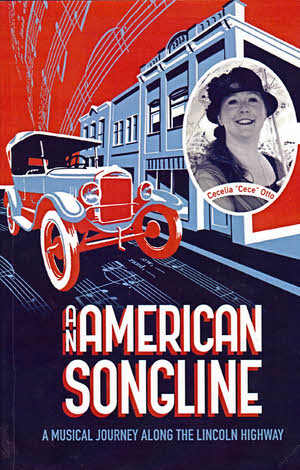 Cece’s a singer… and a traveler and now a writer. Cece (I know the book cover says Cecelia but few actually call her that.) has been singing since childhood. As an adult, she has spent a goodly amount of time singing professionally as a classically trained mezzo-contralto and there was travel, both in and out of the US, involved. Then, just as the career should have been accelerating, a stumbling economy resulted in it instead being sort of paused. Cece used the time to attend workshops and other activities to help in focusing her future. One workshop involved identifying, in a short amount of time, “…five projects you see yourself doing…” and one item on her hurriedly produced list was “singing travelogue”. No one, including Cece, was quite sure what that meant but it sounded intriguing and, before long, she was on her way to defining a real world project that included a coast-to-coast concert tour, a CD, and this book.
Cece’s a singer… and a traveler and now a writer. Cece (I know the book cover says Cecelia but few actually call her that.) has been singing since childhood. As an adult, she has spent a goodly amount of time singing professionally as a classically trained mezzo-contralto and there was travel, both in and out of the US, involved. Then, just as the career should have been accelerating, a stumbling economy resulted in it instead being sort of paused. Cece used the time to attend workshops and other activities to help in focusing her future. One workshop involved identifying, in a short amount of time, “…five projects you see yourself doing…” and one item on her hurriedly produced list was “singing travelogue”. No one, including Cece, was quite sure what that meant but it sounded intriguing and, before long, she was on her way to defining a real world project that included a coast-to-coast concert tour, a CD, and this book.